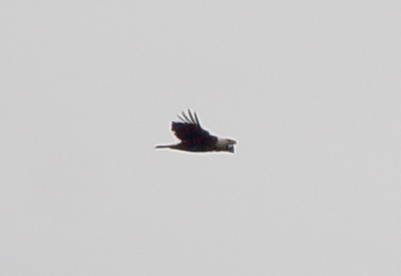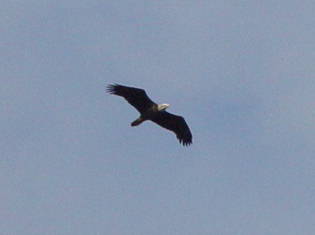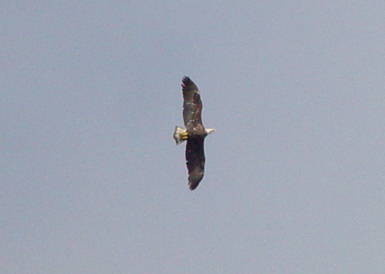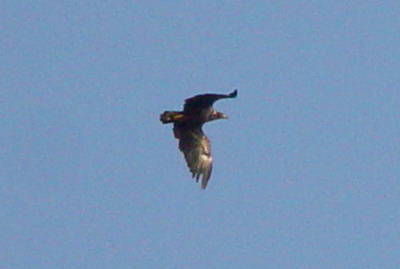

An adult Bald Eagle that was seen on 7 September 2003. This was one of five Bald Eagles seen that day, and the one flying closest to the lookout. Bald Eagles tend to migrate in two separate fall periods. One runs from late August through September and the other from late October into November.

Another adult Bald Eagle seen on 21 September 2003.

This is a fourth year Bald Eagle. It is in the fourth year that the head and tail start to turn white. However, there usually is some black left in either the tail or head. This specimen displays a black band at the end of the tail typical of fourth year birds. This bird was seen over the watch on 21 September 2003.

This is a second year (i.e., White-belly I) Bald Eagle. It is largely a dark brown bird with a white belly (which can't be seen in this photo), white splotching on the wings, uneven length secondary feathers giving the trailing edge of the wing a serated appearance, and a dark bill. First year birds are generally very dark brown all over. Third year birds (i.e., White-belly II) tend to have secondaries that are all the same length and the bill turns yellow. Fourth year birds (see above) acquire their white heads and tails with some black in them. It is in the fifth year that Bald Eagles become adult white-headed and -tailed birds that are the national symbol. This second year bird was seen late in the day on 21 September 2003.
Back to the Allegheny Front Hawk Watch home page.